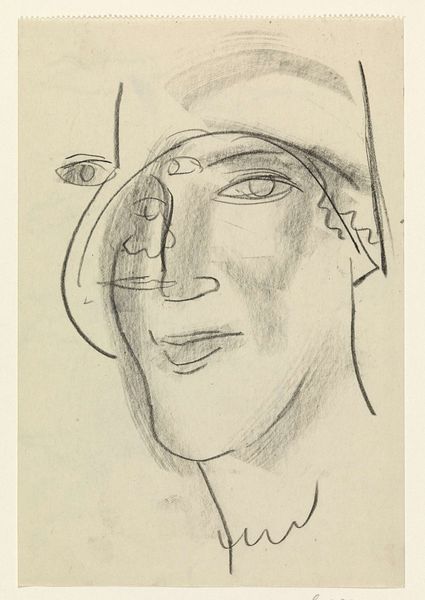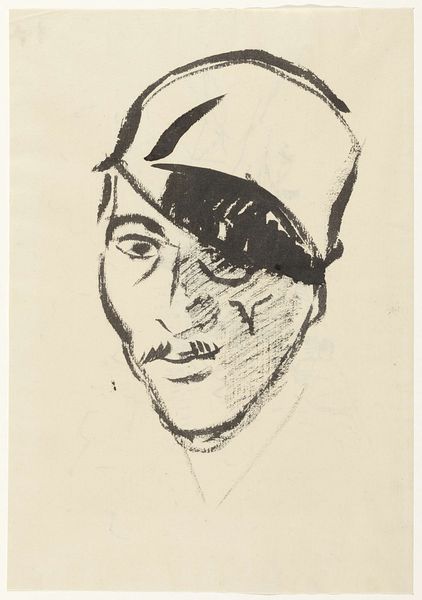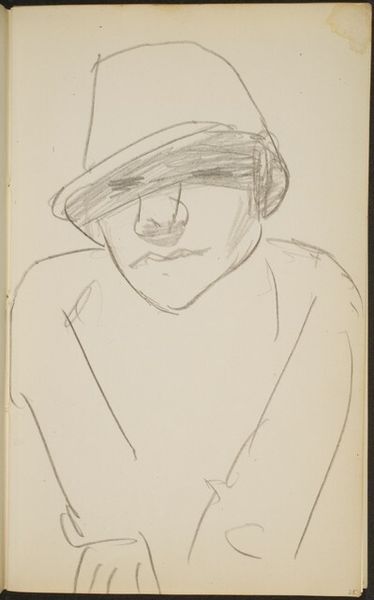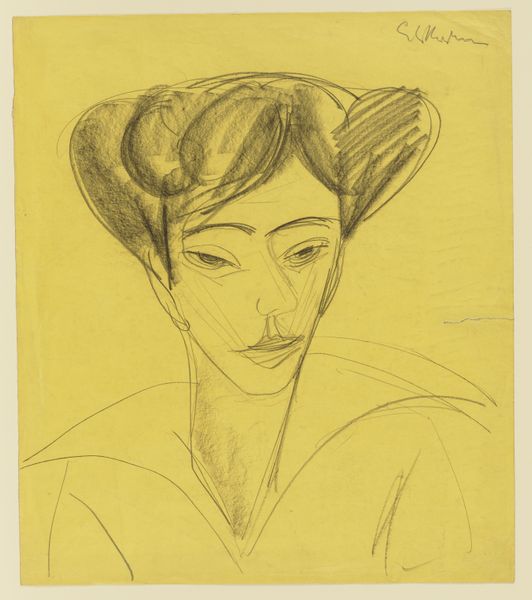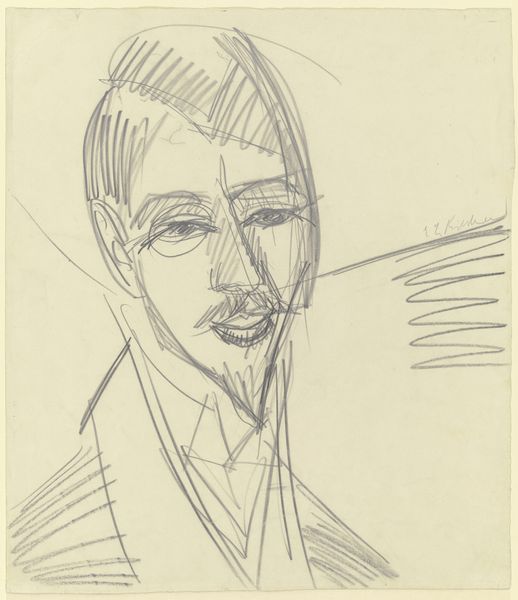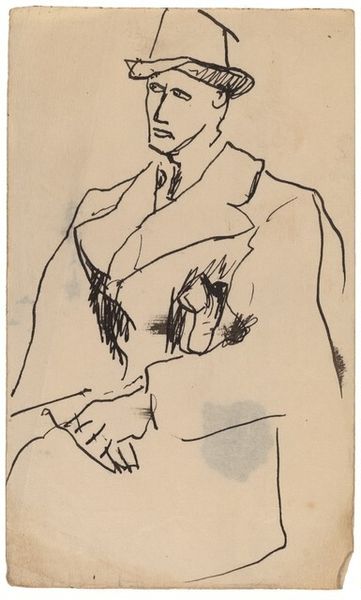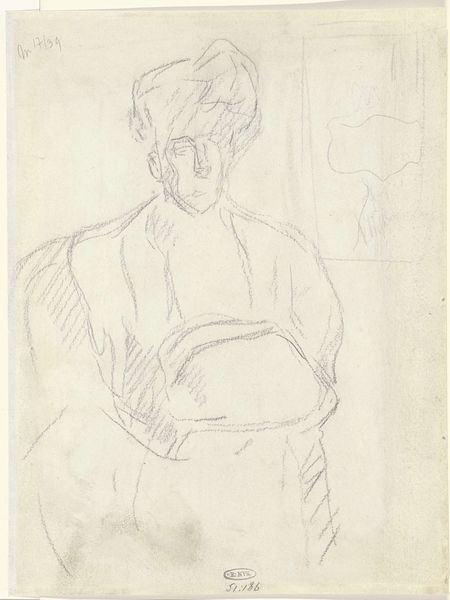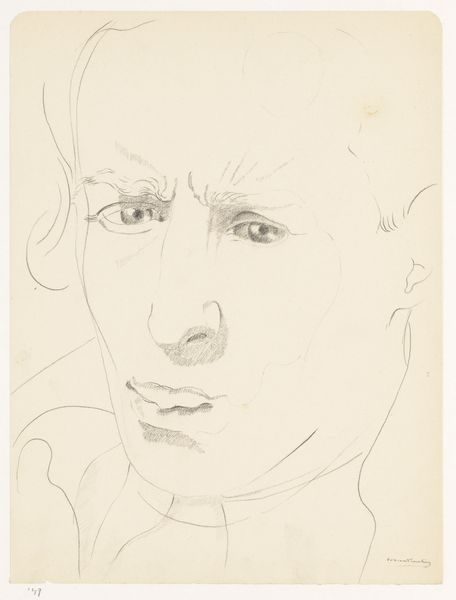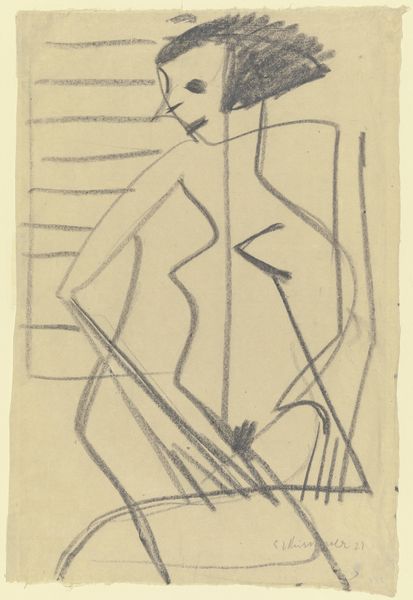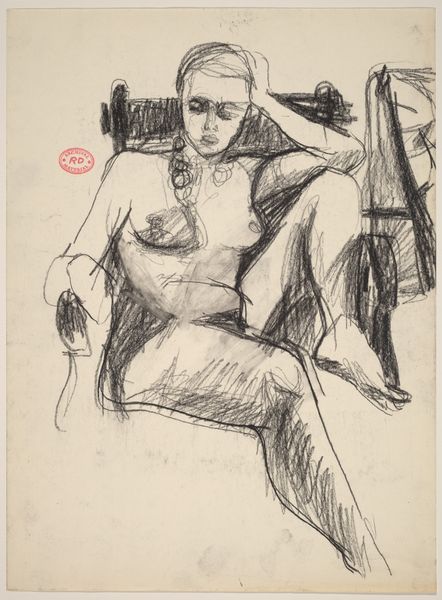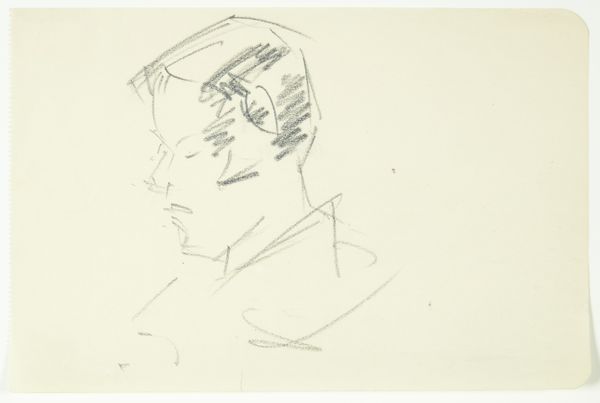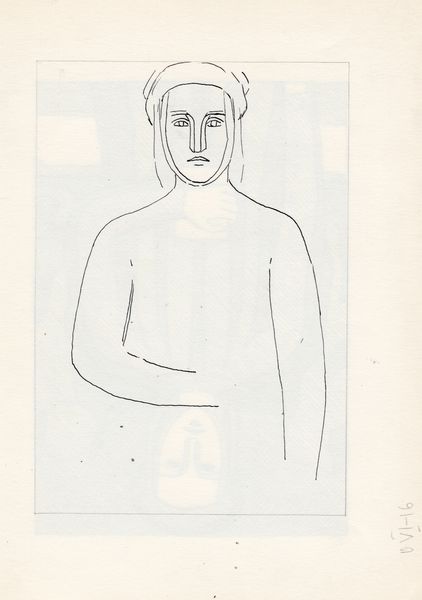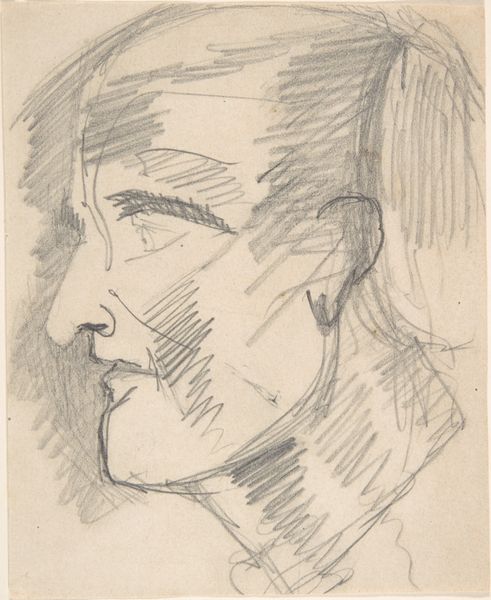
drawing, pencil
#
portrait
#
drawing
#
pencil
#
expressionism
#
portrait drawing
#
nude
Dimensions: 481 mm (height) x 304 mm (width) (bladmaal)
Curator: Look at this intriguing piece. This is “Head and Chest of a Woman” by Harald Giersing, created in 1907. Editor: There's something stark about this drawing. The severe lines seem almost brutal, yet the pose suggests a quiet vulnerability. What’s your take on it? Curator: The artist has created bold geometric facets which seem to slice across the image, almost violently breaking up the natural form. I’m particularly drawn to the tension in the neck, and her gaze. The expression communicates more than any classical nude would ever let on. Editor: Right. This raw quality is definitely intensified by the visible pencil strokes. You see the process laid bare, each mark a record of the artist's labor. Do we know why Giersing would use such rough methods? It goes beyond simple sketches for a painting. Curator: Consider Expressionism, where inner feeling dictates outward form. He reduces and amplifies features, pushing beyond realistic portraiture. This pushes at the raw affect within. And although only a pencil drawing, its monumental simplicity makes a strong statement on paper. Editor: Agreed. The use of a relatively inexpensive medium like pencil aligns with Expressionism’s accessibility too. By sidestepping opulent or expensive techniques, his focus remained on conveying raw human emotion without being weighed down by high art expectations. You know, the model also seems self-conscious and even sad – not just passively observed by Giersing himself. Curator: This is where art historical context truly matters. Looking beyond subject matter, the formal arrangement makes it fascinating – those geometric forms of Expressionism we discussed certainly elevate this. Editor: Precisely. By considering production and materials, along with this work's style – we glean deeper insights into an early twentieth-century worldview shaped both culturally and historically through methods accessible at the time. Curator: True, combining both approaches is the key. That formal intensity certainly does have a power of its own, and yet the materials employed by Giersing speak directly to those times, resonating deeply across contexts still!
Comments
No comments
Be the first to comment and join the conversation on the ultimate creative platform.
